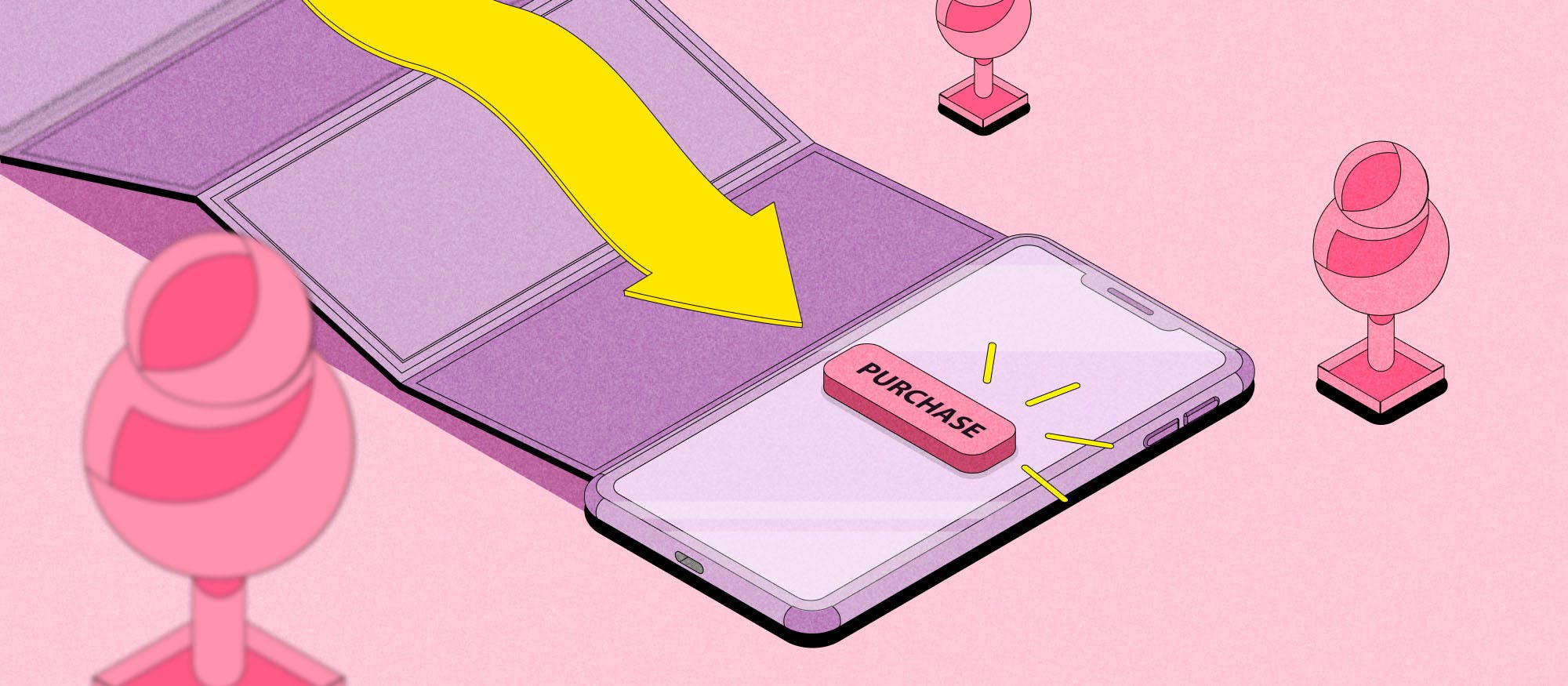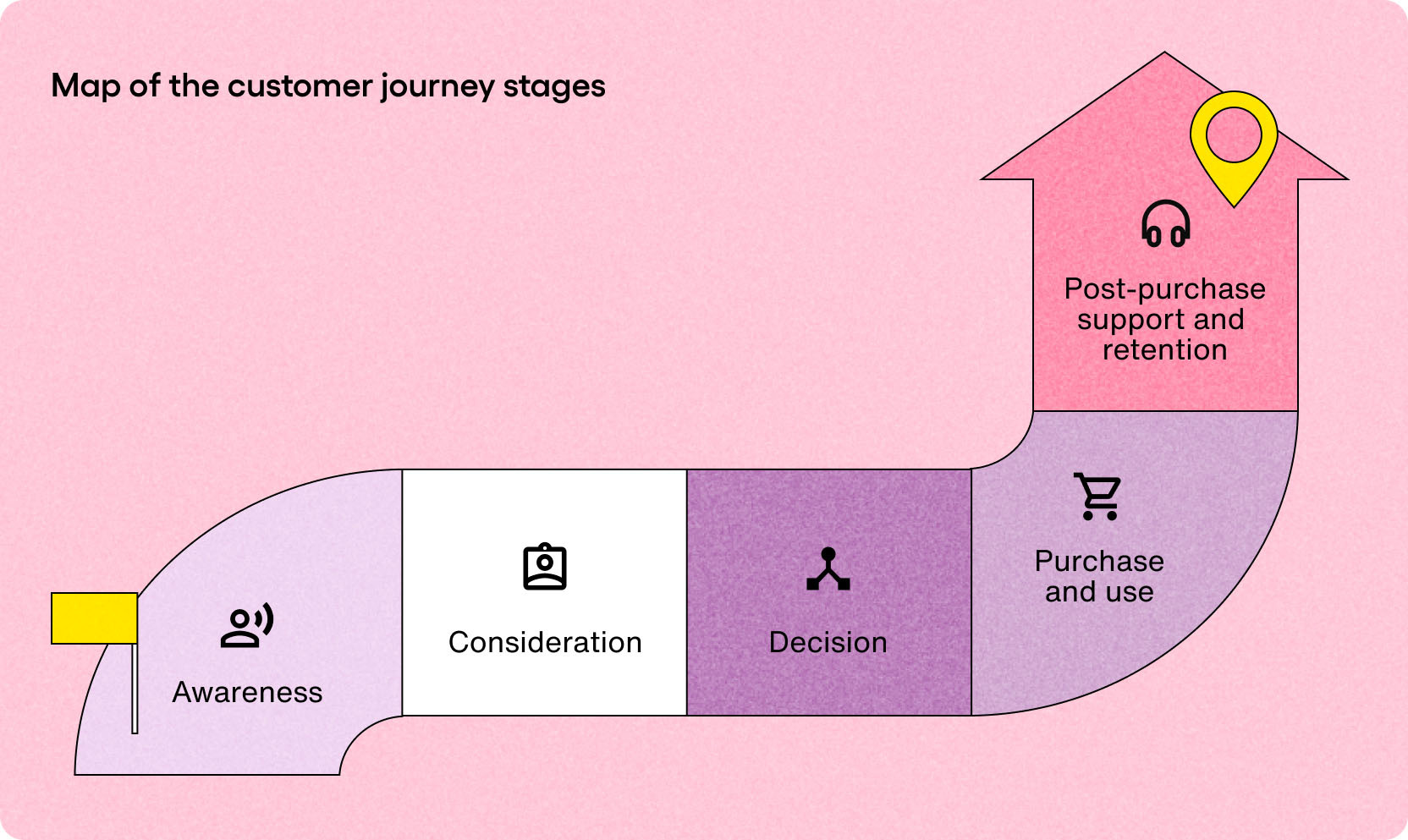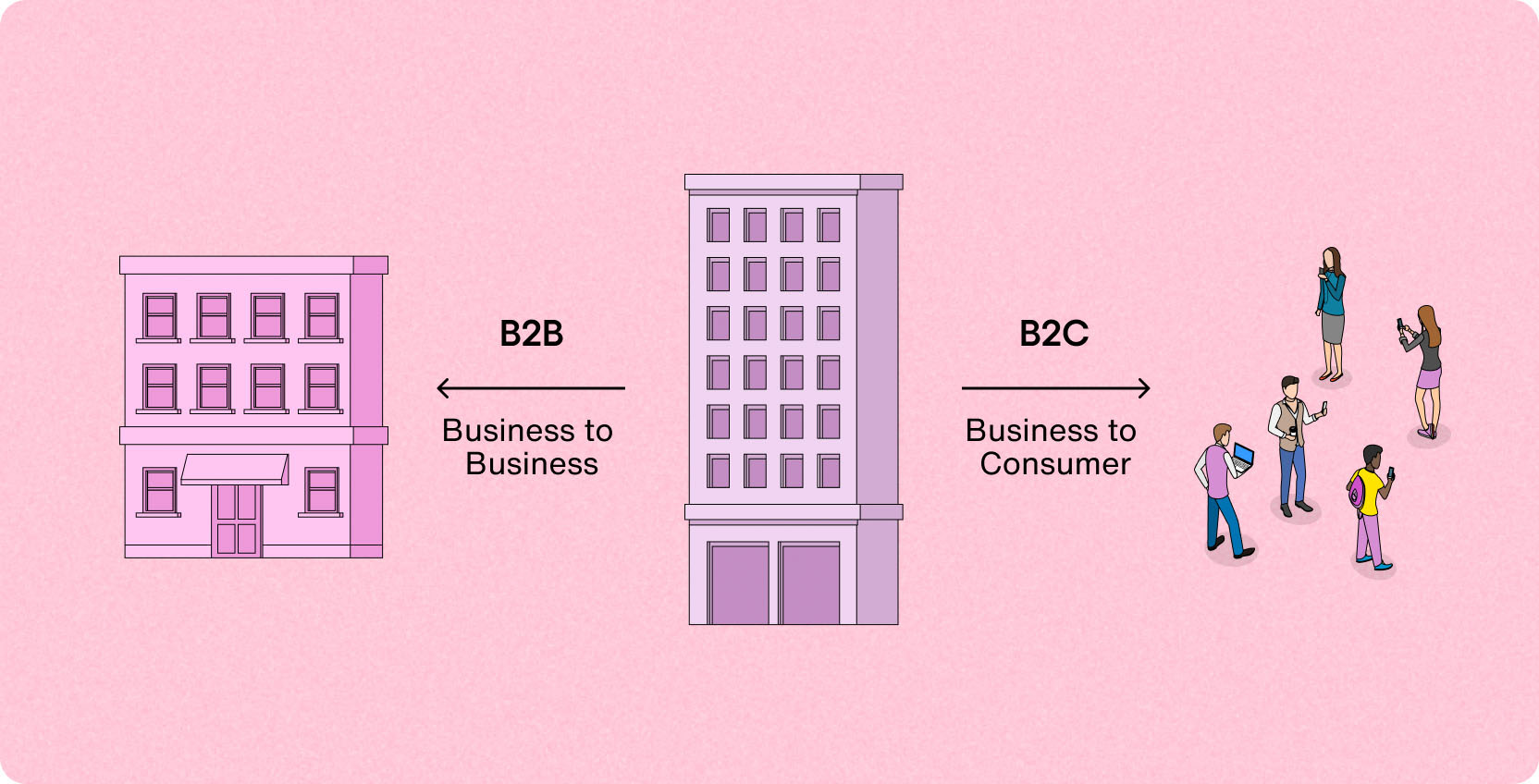Understand your customers' journey: B2B and B2C

Having a deep understanding of who your customer is and what they want is one of the most important factors in business today. Why? Consumers expect businesses to add value; to be true to their values, and focused on customer needs.
Knowing the steps your buyer takes on their customer journey is a crucial part of how to connect and communicate with that person or company; B2C or B2B.
Simply, if you don't know who your customer is, what they want, or where they are in their journey with you - you're not going to close a sale.
In a 2022 survey of 13,000 consumers and 4000 business buyers worldwide, 73% expect companies to understand their unique needs and preferences.
That means every interaction you have with your customers – each step of the buyer’s journey – needs to be valuable, personalized, and seamlessly tied together. Understanding the customer’s perspective helps you understand their needs, emotions, pain points, and motivations at each step. With this information, you can build a marketing strategy that builds trust, engages customers, reduces churn, and improves customer satisfaction.
In this article, we’ll explore the customer journeys of B2C and B2B customers. We’ll look at how they’re different, how to build a customer journey map, and discuss the importance of personalizing each touchpoint and step to provide the best customer experience.
Let’s start with a definition:
What is a customer journey?

The customer journey is the path a new customer takes when they engage with your business. It usually starts when the customer discovers your business, or becomes aware of your brand.
There is no true end to the customer journey. Hopefully, once you have successful customer (one who completes an action) they stick around for repeat business and hopefully spread the word about your business; becoming a valuable part of your marketing and bringing others into the awareness stage.
Most customer journeys involve the following stages:
Awareness - The customer becomes aware of a problem or pain point that they want to solve and has begun to research solutions.
Consideration - The customer has identified possible solutions to their problem (including your product or service) and is doing more research and comparing options.
Decision - The customer buys your product or service to solve their problem.
Purchase and use - The customer purchases the product or service from your business and begins to use it.
Post-purchase support and retention - The customer engages with your customer support and potentially returns to buy more products and services.
On the surface, the customer journey might seem simple, but the reality can be much more complicated. For starters, the customer is exposed to external factors (competitors’ ads, reviews, competing products and services) that can influence their decisions. The customer journey can also include multiple touchpoints with your business. For example, a typical B2B customer journey can include touchpoints like visiting your website and social media, conversations with sales teams and subject matter experts, reading and watching content, and viewing product demos.
To effectively engage your customers throughout their journey, it's crucial to understand their motivations and emotions at each stage. This way, you can better meet their needs and provide valuable experiences that keep them interested in your business.

Virgin Mobile UAE improved their CSAT with Sendbird Desk.
What separates B2B from B2C customers?
Although the core customer journey for B2B and B2C is very similar, the two have key differences.
The main difference is the level of involvement and engagement in the purchase process. A high-involvement purchase involves considerable thought and research before making a decision. B2B purchases tend to be highly involved, including multiple decision-makers, extensive research, and multiple rounds of negotiations with one or more potential vendors. In contrast, B2C purchases usually involve one purchaser and a shorter sales cycle.

These differences are reflected in the B2C and B2B customer journeys. Customer journeys for B2C customers tend to be less complex, although in some cases, such as for mobile apps, they can be very sophisticated. In contrast, B2B customer journeys can be very complex, covering multiple personas and touchpoints.
Let’s break down the differences.
B2C buyer/sales journey
The focus of B2C marketing is usually on quickly driving conversions and sales rather than long-term customer value. However, for products like mobile apps, the journey may include retention and growth.
Although some B2C purchases, such as purchasing a family vacation, can be high-involvement, B2C customer journeys tend to be focused on large numbers of customers with short and simple buying processes.
Steps in the B2C customer journey focus on helping them make a purchase decision as quickly and easily as possible. For example, the customer journey for laundry detergent typically involves a high amount of advertising and in-store marketing, and the consideration and purchase stages take minutes with minimal to no direct interaction between the manufacturer and the customer.
In addition, B2C customers may only ever buy a product or service once, so the focus in B2C marketing is on driving immediate conversion or sales.
B2B buyer/sales journey
B2B sales and marketing focus on building long-term loyalty and sales growth. As mentioned, B2B purchases tend to be highly involved, with multiple stakeholders and decision-makers. Typically, B2B products and services are larger and more complex.
Steps in the B2B customer journey are focused on providing information and engaging decision-makers and stakeholders to help them move to a purchase decision. B2B journeys can take a long time to complete. For example, the purchase decision for an enterprise resource planning (ERP) software solution takes 17 weeks on average. Onboarding and implementation takes an additional average of 6 to 12 months.
The B2B customer journey also typically includes a significant post-sales component, ongoing customer support, retention, and long-term sales growth.
Regardless of the differences between B2C and B2B customer journeys, they have one thing in common: people. To be successful, your customer journey must meet the needs of the people involved.
Optimizing the end-to-end B2B customer journey
In 2023, 3 out of every 4 online shoppers abandon their shopping cart at checkout. Of the top reasons given for leaving their cart, most were because of an unwelcome interruption (high charges tacked on after purchase, the site wanted the buyer to create an account, or the customer didn’t trust the site).
Whether you’re in B2C or B2B, providing a great customer experience is important.
To meet the needs of B2B consumers, you need to evolve and optimize every aspect of your customer journey, from branding to lead generation to post-sales engagement. That means treating every B2B decision-maker and stakeholder as individuals with emotions, goals, and motivations. Providing the best user experience is the foundation of customer lifetime value because it’s an investment in relationships.
And the customer journey is about relationships.
The first step in optimizing your end-to-end B2B customer journey is creating a customer journey map. The journey map outlines all the potential customer journeys your target audience may take as they engage and interact with your business. A well-designed customer journey map can help your business achieve the following marketing objectives:
Discover high-converting touchpoints and channels
Align branding, messaging, and products across departments
Improve CX by removing obstacles, friction points, and frustrations
Build customer engagement and loyalty
Make brand imagery, messaging, and experience more consistent
Reduce marketing costs by targeting investment to what’s working
Tailoring marketing content to support each stage of the journey
Personalize content to suit each customer persona
Your journey map can be as simple or complex as you need it to be – the key is to fully understand your customers while building a marketing strategy that’s easy to understand.
Customer journey mapping
Your customer journey map visually represents how customers interact with your brand from the first touchpoint to purchase and post-sales. The map helps you see your customers’ needs, pain points, motivations, and emotions, along with the touchpoints where customers interact with your business and your marketing activity at each touchpoint.
By mapping the B2B customer journey for your business, your marketing department, sales reps, and customer support teams can get insight into each step of the way. Your customer map will enable you to customize and personalize each interaction and touchpoint to meet each customer’s unique needs.
Here are the basic steps to creating a customer journey map:
Create buyer personas
Identify the different types of customers involved in making purchase decisions. Include their position, role in the decision-making process, responsibilities, and personality. For example, for a finance software purchase, a typical customer persona could be a CFO who has final signing authority on the purchase and needs to understand the strategic value of the software to their business.
Define the stages of the customer journey
Look at your current sales and marketing processes and identify when and where you interact with prospects and buyers, then group these activities into stages based on where they are in the purchasing process. You can use the basic stages (Awareness, Consideration, Decision, etc.) to provide a framework for your stages, then modify or create stages to suit your business.
Map touchpoints
Identify every time your customers interact with your business. Give each touchpoint a name and description (“Customer’s first visit to website,” “customer adds product to cart, etc.). Put yourself in your customer’s shoes and see how each touchpoint looks and feels.
Add customer actions and emotions to touchpoints
Identify what each customer thinks, feels, and does at each touchpoint. Use actual customer feedback data for this phase to avoid guesswork. For each touchpoint, indicate the action the customer needs to take to move forward in their journey. For example, if the customer is looking at your mobile app on the App Store, the action would be to download the app to their device.
Find opportunities for streamlining and improvement
As you work through your marketing data and map the stages of the customer journey, note any places where you can improve the customer experience. For example, if your data reveals customers are abandoning their shopping carts because you require them to divulge too much personal information, reduce your information requirements to the minimum needed to complete the sale.
Visualize the customer journey
Once you’ve mapped out your stages, touchpoints, and customer data and created your personas, you can start to visualize the customer journey. You can use a customer journey map template or illustrate your journey in a way that works for your business. Ensure your customer journey map includes the steps of the journey and the touchpoints associated with each step. Add the tasks and goals the customer performs at every touchpoint, how they will feel, and any frustrations they may encounter. Finally, for each step and touchpoint, include suggestions for improving the customer experience so customers experience less frustration and pain points during their journey.
Provide value at every step
Every step and touchpoint of the customer journey should move the customer closer to solving their problem. Provide value by understanding their needs, emotions, and challenges and responding with the right message or action.
Here are some questions you can ask to help to develop a customer-focused journey map:
What is the customer feeling at this step or touchpoint? Be as specific as possible.
What are the make-or-break points for the journey? These are the moments of maximum emotional load where a bad experience can cause the customer to leave. How do you make sure you get these moments right?
What are the customer’s expectations or needs at this touchpoint? What value are they getting? How do their needs change if this moment goes badly or goes well?
How do you measure customer satisfaction throughout the customer journey? What are your KPIs?
Knowing the answers to these questions can help you deliver a positive customer experience, set benchmarks for customer satisfaction, and track your performance to provide the most value to your customers.

Virgin Mobile UAE improved their CSAT with Sendbird Desk.
Implement personalized messaging
One of the best ways to build trust and engage customers throughout the customer journey is to tailor every interaction to their needs and preferences. 80% of consumers are likelier to do business with a company that offers personalized experiences. By putting the customer at the center of the journey, you make them feel included and understood – and much more likely to engage with your business.
Customer-centric, personalized messaging is a powerful way to build personal connections with customers through meaningful communications across various channels and touchpoints. Customer engagement platforms centralize customer interactions, provide real-time data and analytics, and let you engage with customers anywhere on the customer journey.
Now that we understand how to enhance the complete customer experience let's examine the two categories of journeys to see how you can implement this strategy.
B2C customer journey stages
The B2C customer journey is usually focused on quickly moving customers to conversion, I.E., buying your product or service. Because there is usually only one customer, B2C customer journey maps can be simple. For example, the customer journey for laundry detergent could be as follows:
Awareness
The customer becomes aware of the laundry detergent through traditional and social media advertisements or via word of mouth.
Consideration
The customer realizes they need to buy laundry detergent and notes it on their shopping list. They may look for discounts or promotions online.
Decision
While they are shopping, the customer selects and buys the laundry detergent. Pricing, promotions, or brand loyalty could influence their decision to buy.
Retention
If the customer has a positive experience using the laundry detergent, they might buy it again the next time they need it or recommend it to others.
B2B customer journey stages
The B2B customer journey stages are usually focused on building long-term recurring sales. B2B customer journey maps can be complex, containing multiple stakeholders, decision-makers, and touchpoints. For example, the customer journey for an enterprise resource planning (ERP) software solution could take the following path:
Awareness
The customer identifies a need to streamline business operations and tasks one or more employees with finding an appropriate solution. To complete their task, the employees may assess the company’s current needs and processes, set business goals for the project, and identify what processes and tasks could be automated.
Consideration
After identifying current needs and goals, the customer researches ERP solutions. This stage may involve several different stakeholders depending on the scale of the streamlining project. Once they’ve identified potential solutions, the customer may engage ERP service providers to obtain more information. This process could involve several rounds of meetings, information gathering, and sharing between the customer and potential vendors.
Decision
The customer selects a short list of possible ERP vendors and asks them for quotes. At this stage, senior management at both the customer and vendors may be involved as decision-makers.
Purchase and delivery
The customer chooses a vendor and signs a service contract with them. The customer and vendor begin implementing the ERP services. At this stage, many employees from the customer and vendor may be engaged with the project.
Support, retention, and growth
After the ERP implementation is complete, the vendor provides customer support to the customer, and the focus of the journey turns to customer retention. This may include regular support meetings, system updates, and upselling additional features and functionality.
Customer touchpoints
Customer touchpoints are the moments when a customer directly or indirectly comes into contact with your brand. Touchpoints are vital because they are when a customer forms an opinion of your business.
Some touchpoints that impact how customers notice, perceive, and interact with your brand are:
News articles and social media posts
Ads
Search results
Case studies and blogs
Reviews and testimonials
Website
Interactions with customer service team members
Accessing FAQs or a knowledge base
Word of mouth from existing customers
Marketing emails
Sales calls & meetings
During your customer journey mapping process, consider the different touchpoints and ask these questions:
What is the customer thinking, feeling, or doing?
What do we want them to think, feel, or do, and what do we need to change to make that happen?
What roadblocks prevent customers from engaging with this touchpoint, and how can we remove them?
How can we improve the customer experience at this checkpoint?
By answering these questions and gathering customer and employee feedback on what works and what doesn’t, you can tailor each touchpoint to engage customers, earn their trust, and make every experience with your brand a positive one.
Empower customer experiences with Sendbird
With Sendbird’s award-winning solutions, effective, easy-to-integrate, and customizable mobile user engagement is at your fingertips with our in-app user communications solutions.
Sign up to try Sendbird’s customer service software for free, or request a demo. Sendbird is ready to supercharge your customer journeys so they generate better engagement, conversions, and retention.










